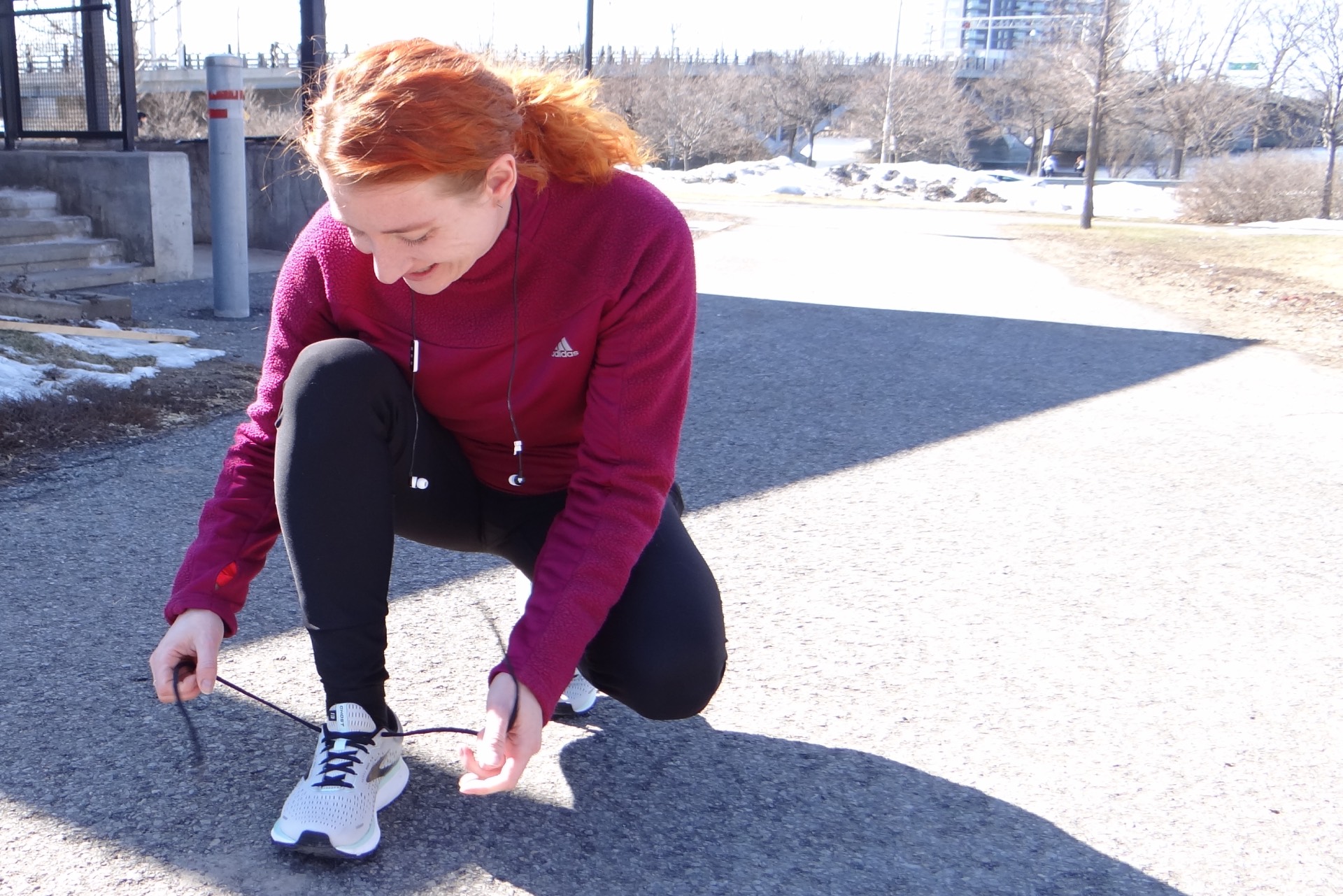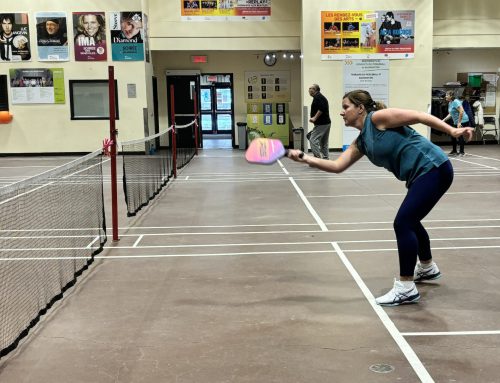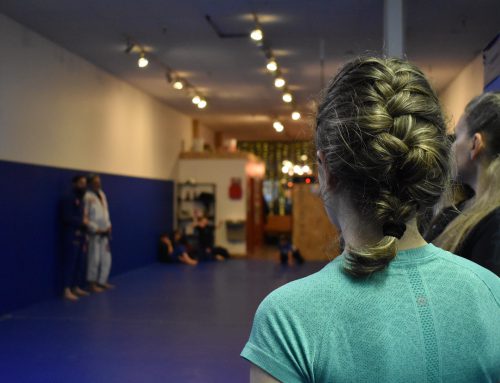BY Felicia Kowal & Katherine Vehar
“I used to be one of those people who said I wouldn’t run unless somebody was chasing me. I wouldn’t have believed then that I would be running for fun one day,” says Heather Stacey.
Early in 2020 Stacey underwent major surgery, causing her to stop exercising altogether. As her recovery process and quarantine began, she started walking and hiking outdoors.
“I was going crazy, so I had to get out of the house just for a change of scenery,” says Stacey.
Last summer, Stacey lost her job. Out of pure boredom, she took up running with the help of the app Couch to 10k. Within a year, Stacey went from a sedentary lifestyle to building up enough stamina to be able to run a half marathon.
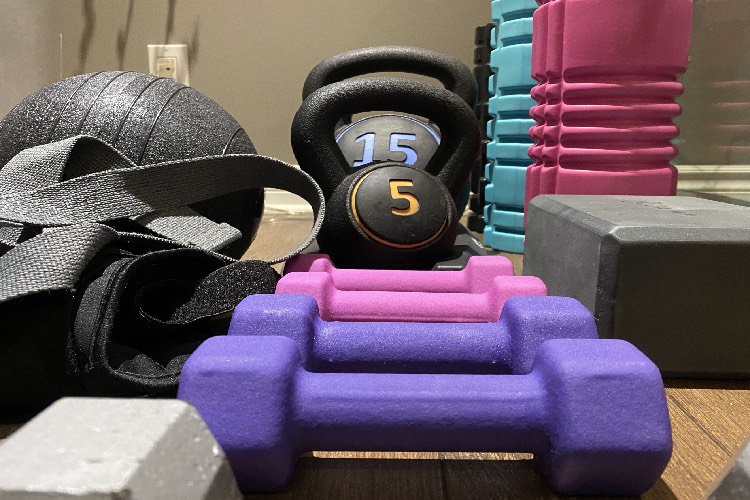
Due to consistent regulation changes, many people have switched their workout routines to at-home set-ups. Photo by Felicia Kowal.
To get the ball rolling, she dusted off an old stationary bike. She says she gradually built up her strength by increasing her time on the bike. Stacey started running 5 km, then 10 km, and just recently hit her goal of 18 km. During the winter, Stacey runs on her treadmill but says it isn’t the same.
“I’m a single parent, I have two kids who are eight and twelve, and with the pandemic, it’s very hectic. You can’t go out. Definitely felt stir crazy,” she says. “So running is my time to get out of the house and have some me-time and listen to my music.”
Since the COVID-19 pandemic began, lockdowns have taken a toll on people’s mental health. A Statistics Canada survey found that social distancing measures can lead to less outdoor exercise and increased anxiety and depression.
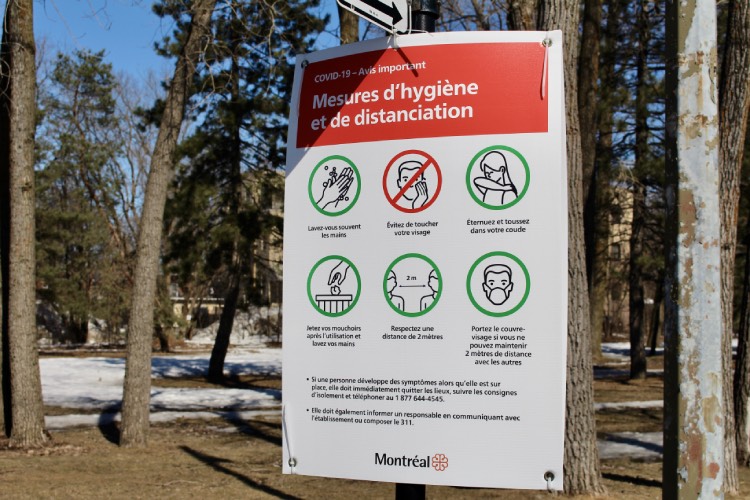
COVID-19 regulations put in place at Parc Stanley by the city of Montreal, to help stop the spread of the virus. Photo by Felicia Kowal.
With gyms shut down by health regulations, home workouts have taken on an important role as fitness instructors moved their workouts online. The BBC reported the sales of exercise equipment and downloads of fitness apps are all on the rise.
Fitness instructors and institutions deal with adapting their services to the pandemic. Video by Katherine Vehar.
Mental Performance Consultant Fanny Barthell Girard says regular exercise can enhance self-esteem and self-confidence, while reducing physiological symptoms of stress, anxiety and depression.
“The major effect of regular exercise is to reduce anxiety,” says Girard. “Especially if you adhere to a long-term exercise program, but it has positive effects regardless of the nature or the type of exercise. Best benefits are obtained after 30 minutes of moderate-intensity training.”
According to Girard, as little as ten minutes of exercise a day can significantly improve your mood.
“Wellness is based on a delicate balance between different dimensions: social, intellectual, emotional, spiritual environmental, physical, occupational, financial,” she says. “At this time, most of these dimensions are greatly unbalanced due to restrictions of our new lifestyle and it leads to various issues such as demotivation, anxiety, stress, behaviours of rebellion etcetera.”
Dr. Leigh Vanderloo is a Knowledge Translation Manager at ParticipACTION, a non-profit organization promoting healthy living and physical activity.
“Being in this pandemic, we were met with a lot of uncertainty, a lot of us having to shift to online, whether it was online learning or working from home,” she says. “We ended up losing the sense of structure or routine in our day-to-day lives.”
Vanderloo describes physical activity, particularly at moderate to higher intensities, as having profound impacts on the health of our brain. She says physical activity plays a big role in releasing the actual physical tension that our bodies might be holding on to.
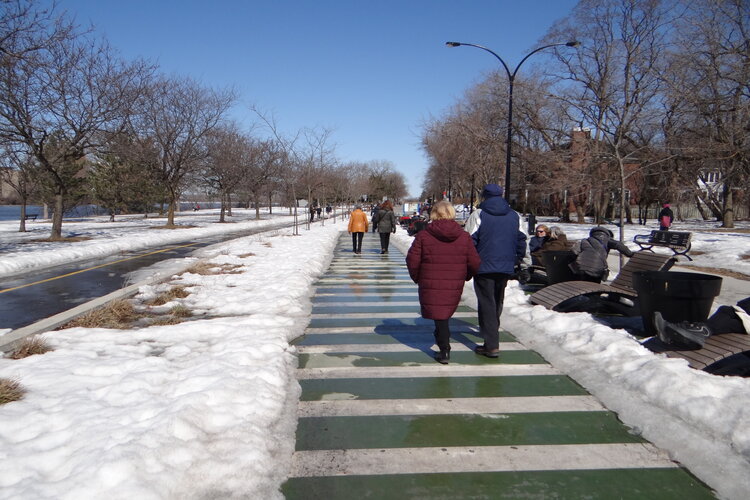
Social distancing walks have become more popular to help stay active during these times. Avenue Park Stanley is open to pedestrians looking to get some fresh air. Photo by Katherine Vehar.
“Not only do [endorphins] prevent the onset of some certain symptoms related to depression and anxiety, if we’re already experiencing those, can help bring those down or at least help us better manage them,” she says.
Miguel Berdugo felt the wrath of the pandemic all too much. After both his father and grandmother passed away from COVID-19 complications, Berdugo made a personal goal to stay in shape.
“My father died because there were a lot of complications related to obesity. After all the grieving, I was like, this is not the example I want to set for my kid,” he says.
Berdugo and his wife found it hard to stay in shape while taking care of their two-year-old child. Working full-time jobs, he and his wife set up a daily routine from 6 a.m. to 8 p.m. They would intermittently work throughout the day while juggling baby duties. Once 8 p.m. came around, it was back to their computers to finish their daytime jobs.
Vanderloo says the pandemic initially brought on a lot of stress, but over time our days have lost much-needed structure. Being forced to stay inside during lockdown, our bodies need a sense of routine in order to stay healthy.
“Try to get active every day, and at the same time every day. Adding in some sort of activity that has that property of structure is key,” says Vanderloo.
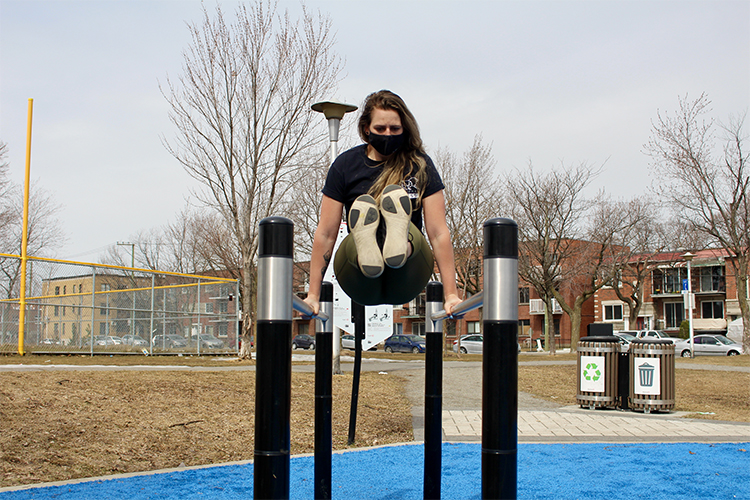
Fitness instructor and owner of Panthera Fitness, Holly Patterson, gets in a quick outdoor workout at Parc de la Louisiane. Photo by Felicia Kowal.
It crossed Berdugo’s mind that if ever he got sick, he would want to be in good shape to give a decent fight.
“I started taking walks, to clear my head. I use an app, it was really good because it allows you to start from the beginning—from zero,” he says.
He used to go to the gym two to three times a week, but he was nowhere near being a runner. Berdugo would hop onto the treadmill, for 15 to 20 minutes. Berdugo says the online platform, Running for Weight Loss by Verv, helped him get into running.
He posts his stats and tracks his runs in a Facebook group and connects with other runners through Whatsapp.
“A lot of people I’ve spoken to, they’ve said they feel like they’ve lost community because they can’t go to the gym. But it seems like we’re still able to [connect], despite the pandemic,” says Berdugo.
With the help of social media, Berdugo watches YouTube videos to help him stay motivated.
He says the feeling of overcoming yourself and bettering yourself is the most important thing he’s learned. Creating a space where he can post his accomplishments and motivate others while motivating himself is the reason he continues to run.
“You definitely want to have a goal, some sort of game plan. And slowly start progressing towards it. But I think having the slow step or incremental responses definitely will set you up for success,” says Vanderloo.
How has the pandemic has impacted your fitness and mental health? Quiz by Felicia Kowal.
